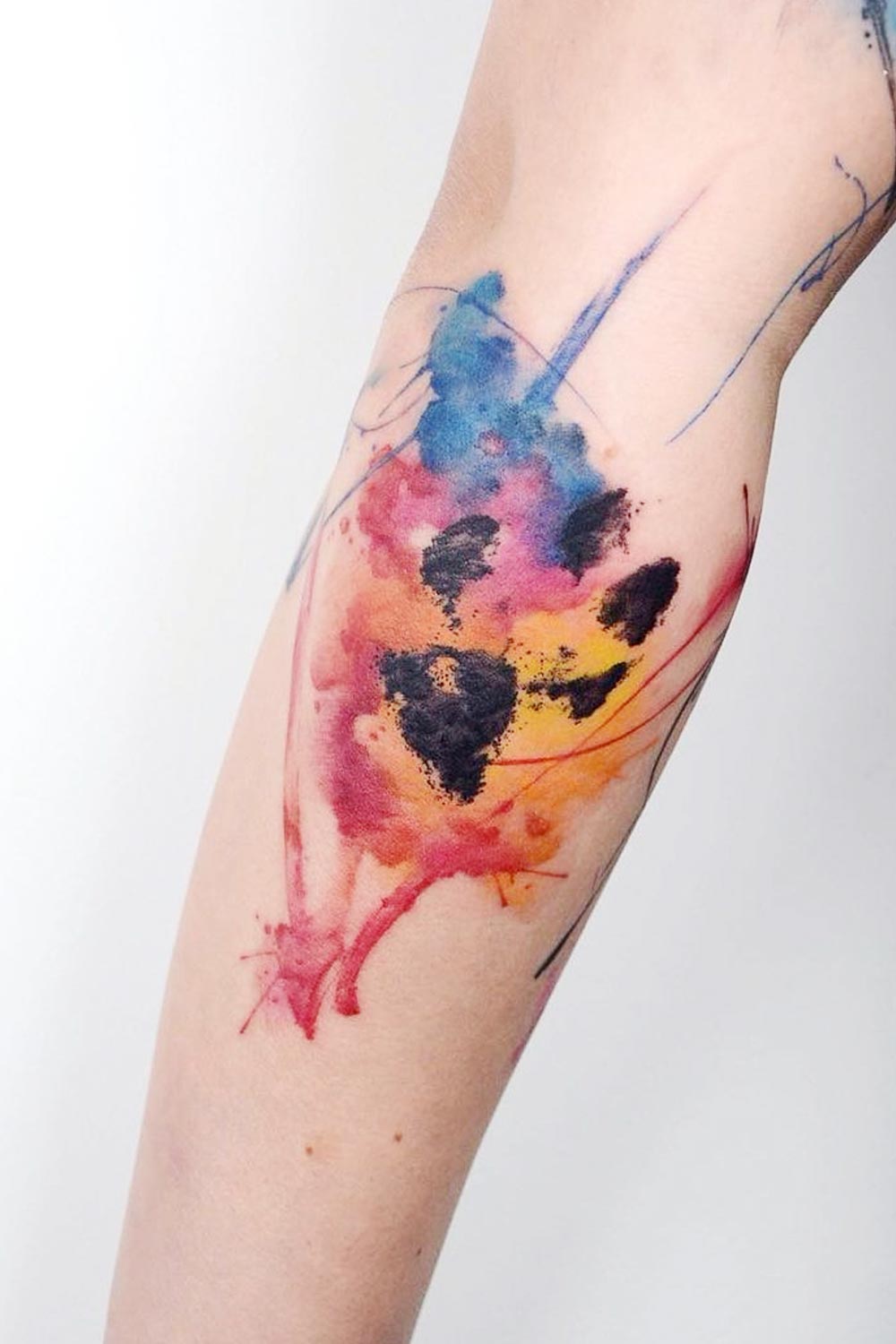Choosing the Right Tattoo Style for You
Tattoos are an intensely personal form of self-expression, and choosing the right style is key to creating a piece you’ll love for years. A primary decision in the tattoo process is to use black and grey or color ink. Each style has unique characteristics, advantages, and drawbacks that can impact your final decision.
1. Characteristics of Black and Grey Tattoos

Black and grey tattoos use a mix of black ink and varying shades of grey to create depth, shading, and contrast. This style often appeals to those seeking classic, timeless designs.
- Versatility: Black and grey tattoos are versatile and suitable for various styles, from realism and portraiture to abstract and traditional.
- Detailing: This style emphasizes shading and gradients, allowing for highly detailed designs.
- Longevity: Black and grey tattoos are known for their durability, as they tend to fade less noticeably over time than color tattoos.
2. Characteristics of Color Tattoos
Color tattoos introduce a spectrum of hues, from vibrant reds and blues to soft pastels, allowing for more artistic freedom and creativity.
- Vivid Appearance: Color tattoos are visually striking, with bright colors that can make designs stand out.
- Customization: Color ink offers more customization, enabling tattoo artists to create complex and intricate designs.
- Style Suitability: Ideal for cartoonish or fantasy tattoos, color ink brings out the personality and flair in designs that black and grey can’t capture as vividly.

3. Pros and Cons of Black and Grey Tattoos
Pros
- Classic Appeal: Black and grey tattoos have a timeless quality that remains popular across generations.
- Fade Resistance: Black ink is generally more resistant to fading, meaning black and grey tattoos may retain their sharpness longer.
- Works on Various Skin Tones: This style is versatile across all skin tones and offers better contrast on darker skin.
Cons
- Limited Artistic Flexibility: Black and grey may lack the vibrancy or liveliness that color can offer.
- Potential for Muted Designs: Depending on the design, black and grey tattoos may not stand out as much as color tattoos, especially from a distance.
4. Pros and Cons of Color Tattoos
Pros
- Vibrant Aesthetic: Color tattoos can be highly expressive, drawing attention with their brightness and range.
- Artistic Versatility: Color tattoos work well with different themes, such as flowers, animals, or fantasy characters.
- Customization: You have an extensive palette to play with, making the design highly personalized.
Cons
- Higher Fading Risk: Color tattoos are more susceptible to fading, especially under sun exposure or without proper aftercare.
- Skin Tone Sensitivity: Colors can vary significantly depending on skin tone, which may affect the final appearance.
- Maintenance Requirements: Due to fading, color tattoos may require more frequent touch-ups to maintain vibrancy.
5. Durability and Maintenance of Each Tattoo Type
Both black, grey, and color tattoos require care, but they age differently and require different maintenance.
- Black and Grey Tattoos: These tattoos fade gracefully, gradually softening over time without losing too much detail. They generally require fewer touch-ups, especially when kept out of direct sunlight.
- Color Tattoos: Colors can fade more unevenly, which may lead to a need for regular touch-ups to maintain the tattoo’s brightness. Sunscreen is crucial for protecting color tattoos from fading due to UV exposure.
6. Style and Design Compatibility
The design you choose can help determine whether black and grey are better. Here are some style recommendations based on each tattoo type:
- Black and Grey: Best suited for realistic portraits, intricate line work, nature scenes, religious art, and classical designs.
- Color: Ideal for playful or fantasy art, floral patterns, animals, vibrant geometric shapes, and anything needing a bold, eye-catching look.
7. Skin Tone Considerations
Skin tone can impact how colors appear once healed. While black and grey tattoos work well across all skin tones, colors may vary:
- Darker Skin Tones: Darker colors like red, blue, and green tend to appear more vividly. Black and grey provide excellent contrast on dark skin, making them a reliable choice.
- Lighter Skin Tones: Color tattoos generally appear true-to-color on lighter skin, providing a broader range of vibrant options.
8. Choosing Based on Your Personality and Lifestyle
Your tattoo should align with your personality and lifestyle, and both styles have traits that may suit different preferences:
- Black and Grey for Minimalists: If you prefer a subdued, classic look that’s less prone to fading, black and grey may be the best choice.
- Color for Creative Expression: Color tattoos allow for more artistic freedom and bold expression, making them ideal for those who want their tattoos to be as lively as possible.
9. Making Your Decision: Key Takeaways
When deciding between black and grey or color, consider your design, skin tone, lifestyle, and long-term preferences. Here’s a quick summary:
- Choose Black and Grey if you want a classic look that’s easy to maintain and highly versatile across different designs.
- Opt for Color if you’re drawn to vibrant, expressive designs and are prepared to follow maintenance guidelines for longevity.
Express Your Style with Confidence
Whether you’re drawn to the timeless allure of black and grey or the vibrant beauty of color tattoos, the choice ultimately comes down to personal preference and the look you envision. Consulting with a skilled tattoo artist can also provide insights based on the design you want and your skin tone, helping you make an informed decision. Whichever you choose, your tattoo is a powerful form of self-expression—embrace the style that feels most like you




